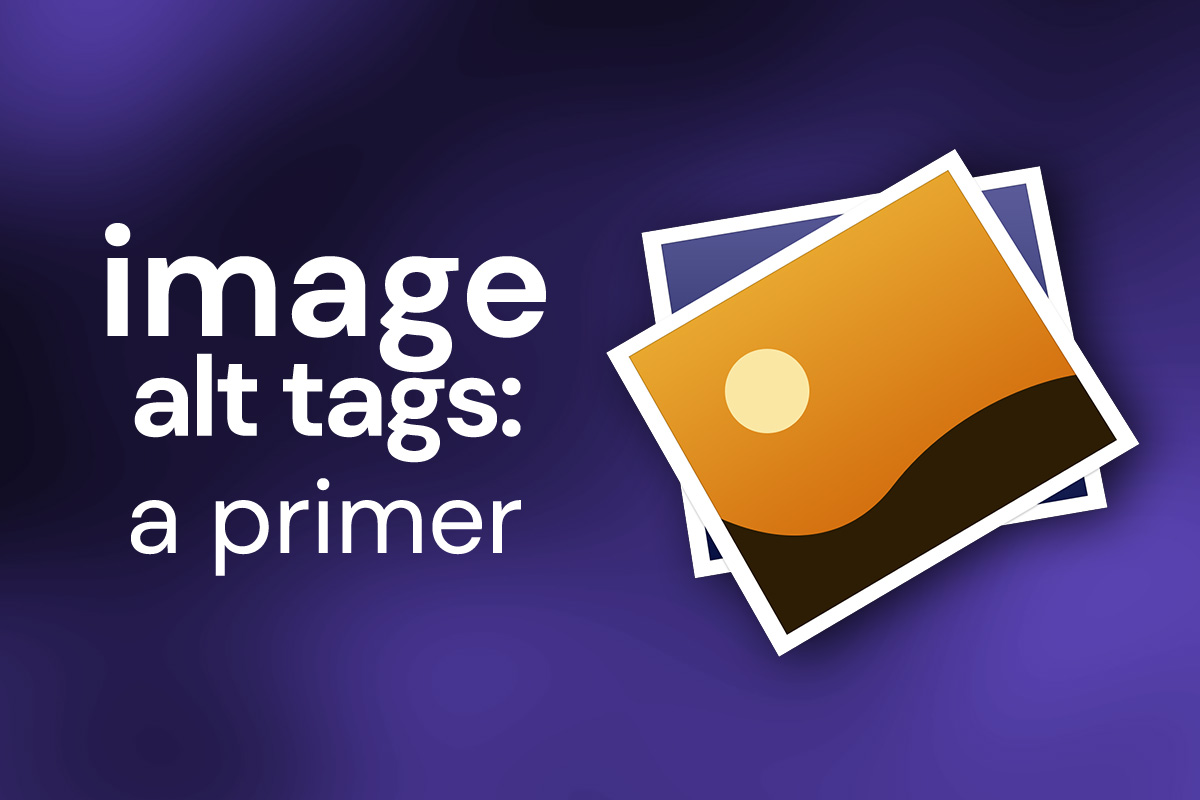If you’ve ever inserted an image into your WordPress or other website, you’ll know that you’re given the option to add what are commonly called “ALT tags.” If you want to be precise, they’re really called “alternative attributes of an image tag.” In other words, this text is a stand-in for the image in the code if your website is being accessed by search engine bots crawling the Internet, or by visually impaired users who may be listening to your site instead of reading it. And yes, these ALT tags are important—and for reasons that you might not anticipate.
Best Practices for Image ALT Tags
First of all, consider giving your images descriptive names. Instead of “pic1.jpg,” think about using something like “dallas-bluebonnet-field-april-2016.jpg.” And yes, ALT tags are a good place for you to insert your keywords. But going nuts and keyword-stuffing your image ALT tags can get you penalized by search engines. Above all, focus on actually describing your image in the ALT tag: “French blue chair with gold leaf” or “recipe for white bean soup with rosemary.” If your image depicts a specific product, include both the full product name and the product ID (if any) in the alt tag, so it can be easily found—particularly in Google Image Search, which we’ll delve into in a moment. Alternatively, give your images that are used as navigational elements human-centric tags too. If you’ve got an image of an arrow that users click to move to the next page, make that alt tag something like “Navigate to the next page.” Always, always, always write for humans—short, descriptive phrases that assist your users in understanding the purpose of your page and how to complete their desired actions. If you do that, you’ll be optimizing for SEO without having to worry about the potential negative impact of keyword stuffing.
(A side note about title attributes: title attributes should be used when the image is a hyperlink to a specific page, and should contain information about what will happen when your user clicks on the image. If a larger version of the image will pop up, your title attribute should be something along the lines of title=”View a larger version of the ________ image.”)
How many keywords can you use in your image ALT tag, you might wonder? This author has done some informal experiments over the years to gauge the impact of keyword stuffing on Google search results, and has concluded that the first 16 words in an image ALT tag are taken seriously by Google bots.
Why Optimize for Google Image Search?
We talked a bit earlier about Google Image Search. Giving your images ALT tags allows Google (and other search engines) to index your images. So if someone is searching for a picture of Waimea Falls, and you’ve ever-so-faithfully tagged your image as “Waimea Falls,” it’s likely that your image will come up when someone does a search using Google Images. People use image search for inspiration (tattoo ideas, kitchen redesign ideas), for shopping, research, health queries, to kill time, or even as a visual dictionary. All of these can lead users to make a conversion on your website. You’ll be able to see how many people click to your website from an image in Google Image Search by checking your Google Analytics. By all means, we recommend checking out your analytics data and seeing if there is room for improvement—whether that means adding more ALT tags for your images or more images altogether.
Have any other questions about images on the web? Like how big should your images be, or how to use other kinds of tags? We’re here to help! Contact us any time.






